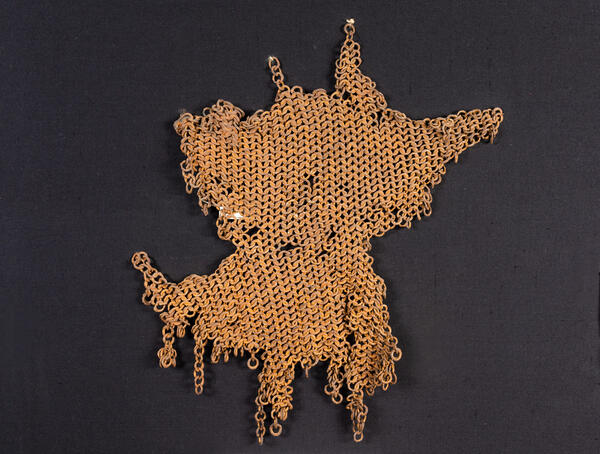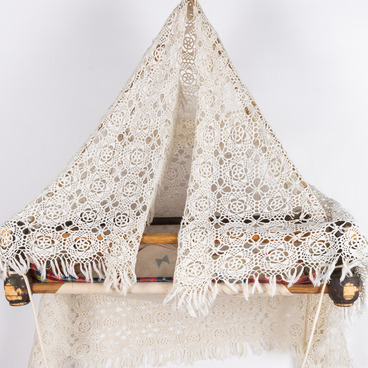The first chain mail shirts appeared hundreds of years BC. For instance, researchers have found multiple warrior skeletons in chain mail at Scythian burial sites that date back to the 5th century BC. Approximately at the same time, ancient Roman warriors battled the mail-clad Gauls. And after the Roman Republic was formed, its own legionnaires donned chain shirts at well.
Between the 10th and 19th centuries AD, chain mail was the most widespread type of armour in Europe and Asia. Chain mail was made by meshing together numerous metal rings. The resulting net shielded the wearer’s body.
It could easily withstand being grazed from the side by a saber, sword, or dagger; arrows could not pierce it either if they hit it at the very end of their trajectory. However, it was not enough for deflecting head-on blows, so warriors had to use shields for extra protection. Chain mail shirts were padded with special doublets that kept the metal from rubbing against bare skin and absorbed some of the damage.
A single chain mail shirt could take several months to make. The chain links were wrought from metal wire. The techniques of making that wire could vary. Armour makers could stretch or hone strips of metal, or forge fine metal rods for this specific purpose.
Once ready, the wire would be shaped into a spiral with a mandrel. This ensured that the mail rings all had the same diameter. The links were usually cut apart and then, at the chain mail assembly stage, either welded at the open ends or riveted together.
Each ring had to be connected to four other rings. Welded rings were affixed to one another with miniature nails. Smiths created alternating rows of riveted and welded chain links, which made the armour more resistant to damage. Steel elements were often mixed with copper or bronze insertions for a more striking design. If the armour was commissioned by someone, it could bear custom inscriptions.
But the chain mail itself was a universal technique. So if a warrior’s chain mail shirt got torn in battle, this did not mean that he now needed a whole new shirt: the damaged links were simply removed and replaced.
Before 1971, archaeologists found over 127 samples of chain mail armour in various Russian regions. 40 of them were in good condition; the rest had survived in scattered fragments.
Between the 10th and 19th centuries AD, chain mail was the most widespread type of armour in Europe and Asia. Chain mail was made by meshing together numerous metal rings. The resulting net shielded the wearer’s body.
It could easily withstand being grazed from the side by a saber, sword, or dagger; arrows could not pierce it either if they hit it at the very end of their trajectory. However, it was not enough for deflecting head-on blows, so warriors had to use shields for extra protection. Chain mail shirts were padded with special doublets that kept the metal from rubbing against bare skin and absorbed some of the damage.
A single chain mail shirt could take several months to make. The chain links were wrought from metal wire. The techniques of making that wire could vary. Armour makers could stretch or hone strips of metal, or forge fine metal rods for this specific purpose.
Once ready, the wire would be shaped into a spiral with a mandrel. This ensured that the mail rings all had the same diameter. The links were usually cut apart and then, at the chain mail assembly stage, either welded at the open ends or riveted together.
Each ring had to be connected to four other rings. Welded rings were affixed to one another with miniature nails. Smiths created alternating rows of riveted and welded chain links, which made the armour more resistant to damage. Steel elements were often mixed with copper or bronze insertions for a more striking design. If the armour was commissioned by someone, it could bear custom inscriptions.
But the chain mail itself was a universal technique. So if a warrior’s chain mail shirt got torn in battle, this did not mean that he now needed a whole new shirt: the damaged links were simply removed and replaced.
Before 1971, archaeologists found over 127 samples of chain mail armour in various Russian regions. 40 of them were in good condition; the rest had survived in scattered fragments.



